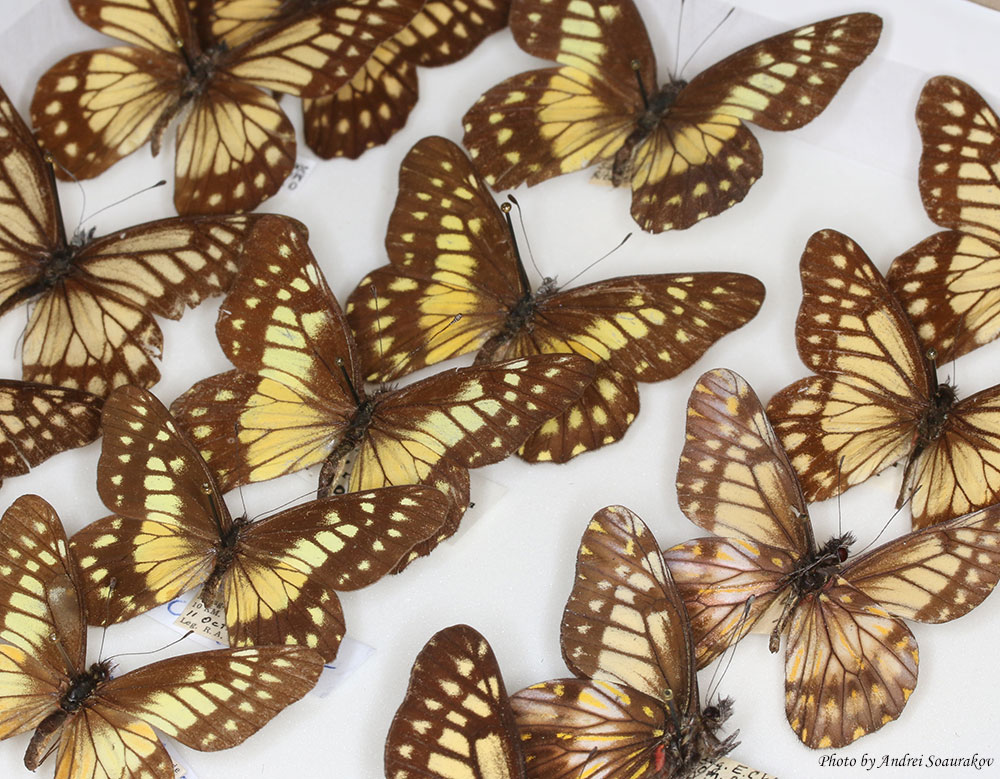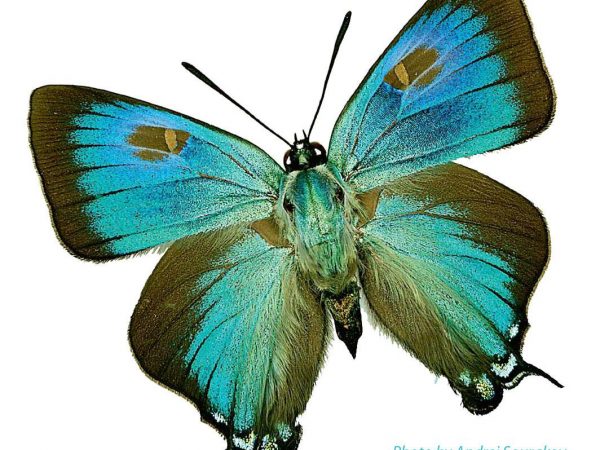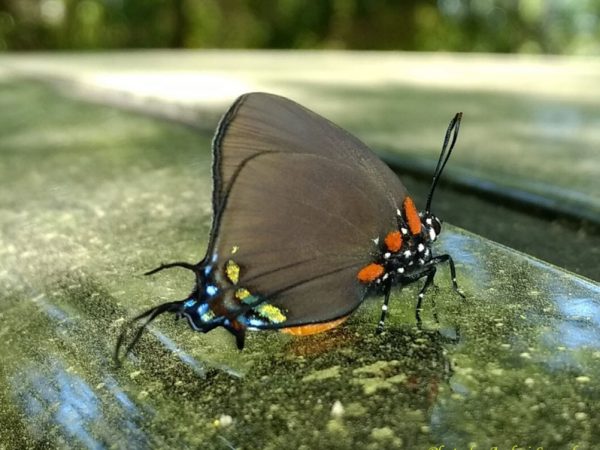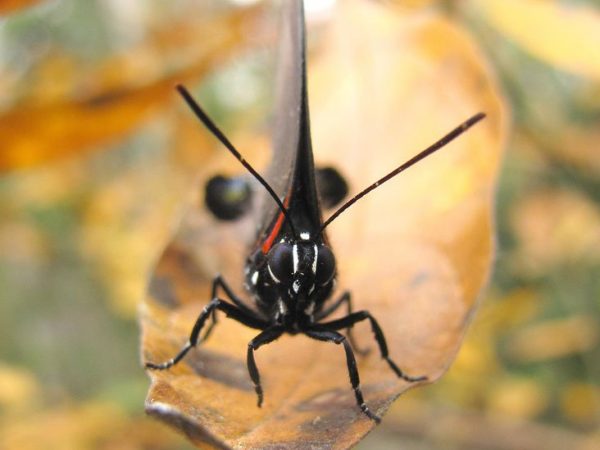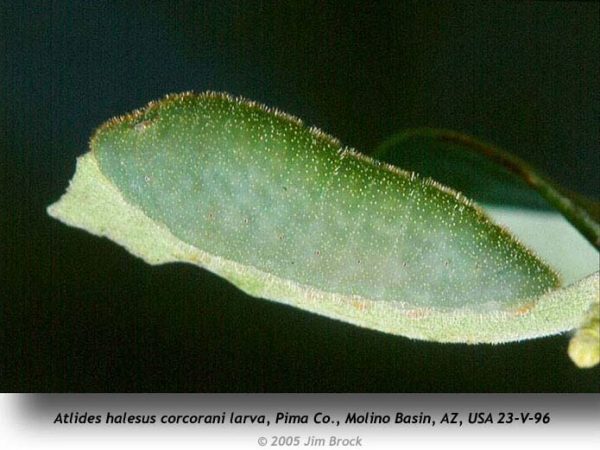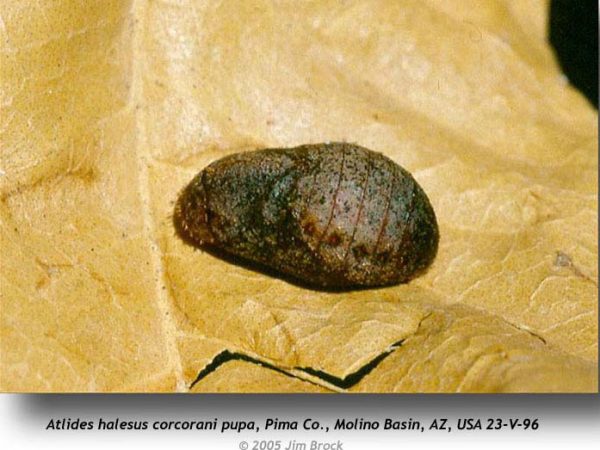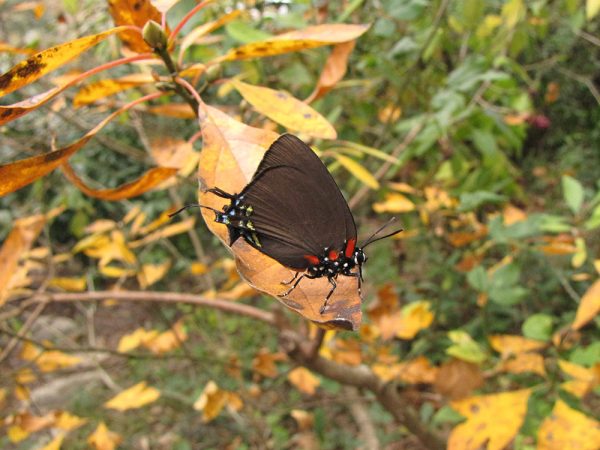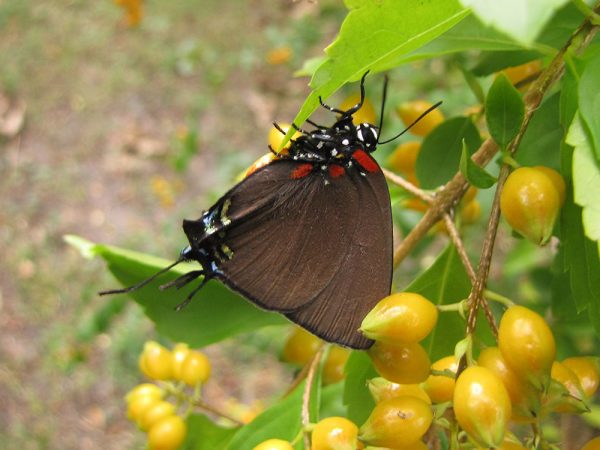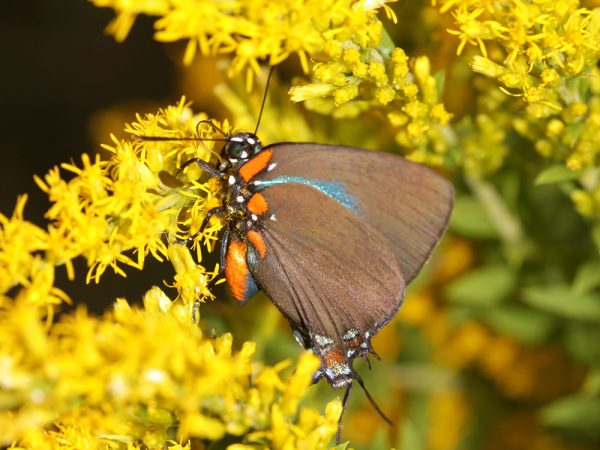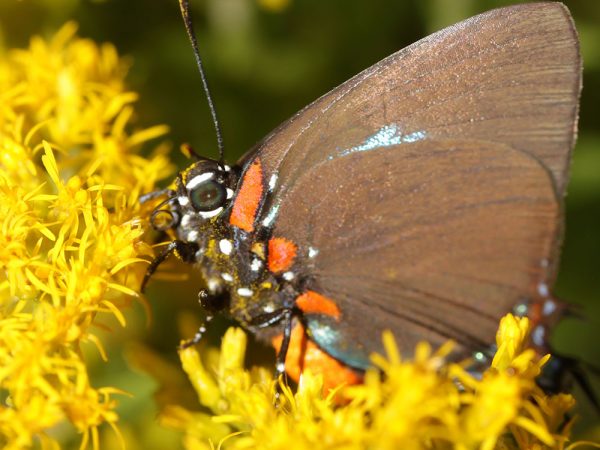Christmas is almost here, and the season-appropriate songs are filling the radio waves and ears of last-minute shoppers. Among them are mistletoe songs, which, every time I hear them, remind me of the butterflies that feed on them as caterpillars. Here, in Florida, these are the Great Purple (actually blue) Hairstreaks, Atlides halesus that feeds on Phoradendron, but in other parts on the world, other beautiful butterflies also feed on these parasitic and chemically defended plants.
For instance, in the Pacific (e.g., New Guinea) and in the Southeast Asia, caterpillars in the genus Delias feed on mistletoes of genera Santalales and Loranthus. The resulting butterflies sport bright colors, making them memorable and repellent to birds but attractive to collectors. In the jungles of South America, mistletoe-feeding caterpillars are found among a group of pierids similar to Delias of the genus Catasticta.
Among moths, striped caterpillars of the dayflying Mistletoe Moth (Comocrus behri) found in Australia, feed on Amyema spp. growing on Casuarina and Eucalyptus trees. In the United States, a noctuid, the Beloved Emarginea Moth (Emarginea percara) feeds, as larvae, on leaves of Phoradendron.
These are just some of the many Lepidoptera species that would appreciate mistletoe much more if it were growing on a tree rather than hanging on your door.
 Atlides halesus. Florida Museum collection.
Atlides halesus. Florida Museum collection. Atlides halesus behind Florida Museum.
Atlides halesus behind Florida Museum. Atlides halesus, head. Gainesville.
Atlides halesus, head. Gainesville. Atlides halesus, larva.
Atlides halesus, larva. Atlides halesus, pupa.
Atlides halesus, pupa. Atlides halesus, head. Gainesville.
Atlides halesus, head. Gainesville. Atlides halesus, head. Gainesville.
Atlides halesus, head. Gainesville. Atlides halesus on Goldenrod, behind Florida Museum.
Atlides halesus on Goldenrod, behind Florida Museum. Atlides halesus behind Florida Museum.
Atlides halesus behind Florida Museum.
Together with my daughter, Allie, we wrote this “Hairstreak on Mistletoe” song to mark 2021 winter celebrations. By the way, mistletoes appeared in folklore surrounding Yule holidays long before the first Christmas.
Solo:
Mistletoe surely’s a jubilant sprig,
but it’s more than just a holiday twig.
It reminds me of those I love so dear –
the Purple Hairstreaks, who harbor no fear
of being eaten. So charismatic
dressed in their colors aposematic.
Chorus:
Sitting on the mistletoe
Dusky, lustrous mistletoe,
One last pupa hanging low,
All the sleepy larvae gone,
Just one left still munching on.
Solo:
From mistletoe, larvae reap alkaloids,
store them inside, so that parasitoids’
eggs are waylaid, safe stays the hemolymph.*
The radiant hairstreak, a resplendent nymph,
exits its pupa and takes to the skies,
a shining blue gem amongst butterflies.
Chorus:
Sitting on the mistletoe
Dusky, lustrous mistletoe,
One last pupa hanging low,
All the sleepy larvae gone,
Just one left still munching on.
* Note: This is a hypothesis. Pupae of the Great Purple Hairstreak still frequently result in parasitoids, but probably much fewer generalist wasps can develop inside these caterpillars because of their toxic diet.
Great Purple Hairstreak (Atlides halesus). Defensive behavior in the video below attracts the attention from real to false head formed by hindwings of the butterfly. This deflects attacks by predators such as birds and jumping spiders.


